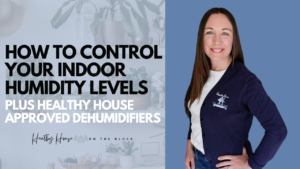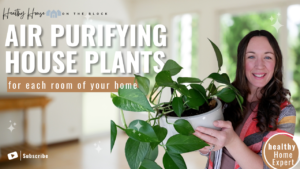This number can be surprising and somewhat alarming given the fact that health officials and home inspectors have determined that most indoor air is actually more polluted than the outdoor air we breathe. And why is this? The cause for this problem comes from the fact that our products and building materials contain many harmful toxins which are released into the air inside our homes. The problem is accelerated by the fact that homes are sealed incredibly tight to minimize energy loss. This means the toxins inside our homes are staying there for the long haul.
Just a few decades ago, a home exchanged its indoor air with fresh outdoor air about 5 times per hour. Today in our modern society, most homes introduce fresh air into the home just 5 times per DAY. Because of this, toxins have no place to go and end up staying inside our indoor air, becoming concentrated in areas as we breathe them in.
One toxin that has been the center of many studies and research as of late is formaldehyde.
It can enter our bodies through skin absorption when found in personal care products. More commonly, it is inhaled because formaldehyde is gas. When formaldehyde is inhaled it can irritate the throat, eyes and nose. It has also been shown to increase children’s risk of asthma , promote respiratory infections and induce common allergies.
Manufactured Wood & Furniture
One of the largest sources for formaldehyde inside the home is in manufactured wood products. This is because formaldehyde is contained in glues and solvents used in creating these pieces. Any manufactured furniture that is not solid wood could be made with particle board, medium density fiberboard or plywood. All of these manufactured woods are usually made with glue that contains Formaldehyde.
Places you may find manufactured wood inside your home include:
The great news is that more and more furniture companies are beginning to use glues that are formaldehyde free. Most of them will be advertised as formaldehyde-free, but you can also look for a third party certification such as GreenGuard to determine the product’s toxicity. |
Linens & Textiles
Another problem that can occur when formaldehyde is used in linens and textiles is that the fibers create dust that then lives around our homes. This can be almost impossible to completely remove, which means our bodies are constantly coming in contact with the toxin. Formaldehyde is typically found in fabrics used for:
- Drapes and curtains
- Duvets and bedspreads
- Upholstered Furniture
Again, there is good news that manufacturers are emerging with formaldehyde free options when it comes to textiles, linens and furniture. Look for 100% organic fibers that are untreated to ensure they are made without formaldehyde.
A great way to gain insight and get assurance that a particular product is free of harmful toxins like formaldehyde is to contact the manufacturer directly and ask them questions about toxins and how the product is made.
Household and Personal Care Products
Formaldehyde in household cleaners and products can be especially harmful as the products are also being sprayed onto surfaces. This creates a vapor or mist making it easily inhaled and ingested while the product is being used.
When using personal care products like soaps and lotions that contain formaldehyde, your body’s largest organ is absorbing the toxins directly into your bloodstream. This is another reason you want to be make sure your personal care products are natural and toxin free.
While products won’t list “formaldehyde” in the ingredient list, these chemical names are hints that Formaldehyde is used in a product:
- Formaldehyde
- Quaternium-15
- dimethyl-dimethyl (DMDM) hydantoin
- imidazolidinyl urea
- diazolidinyl urea
- sodium hydroxymethylglycinate
- 2-bromo-2-nitropropane-1,3-diol (bromopol)
Finding products that are 100% natural and certified by a third party will help eliminate the risk of introducing more formaldehyde into your home. Sites like The Environmental Working Group offer lists of safe cleaners and products for your home as well as personal care products that are safe. Or, even better, make your own cleaning solutions that
|
Understanding the risks of formaldehyde to your health and where it can be inside your home is important when trying to create a healthy living space. Formaldehyde is in many places around our toxic world, and reducing the exposure at home can allow your body to “rest” from this toxin.
Instead of feeling overwhelmed over what cannot be changed, make it a goal to change what you can control. This can be a huge step in the right direction of removing toxins from your home. Minimizing your risk is the best place to start in creating a healthy home environment. |








